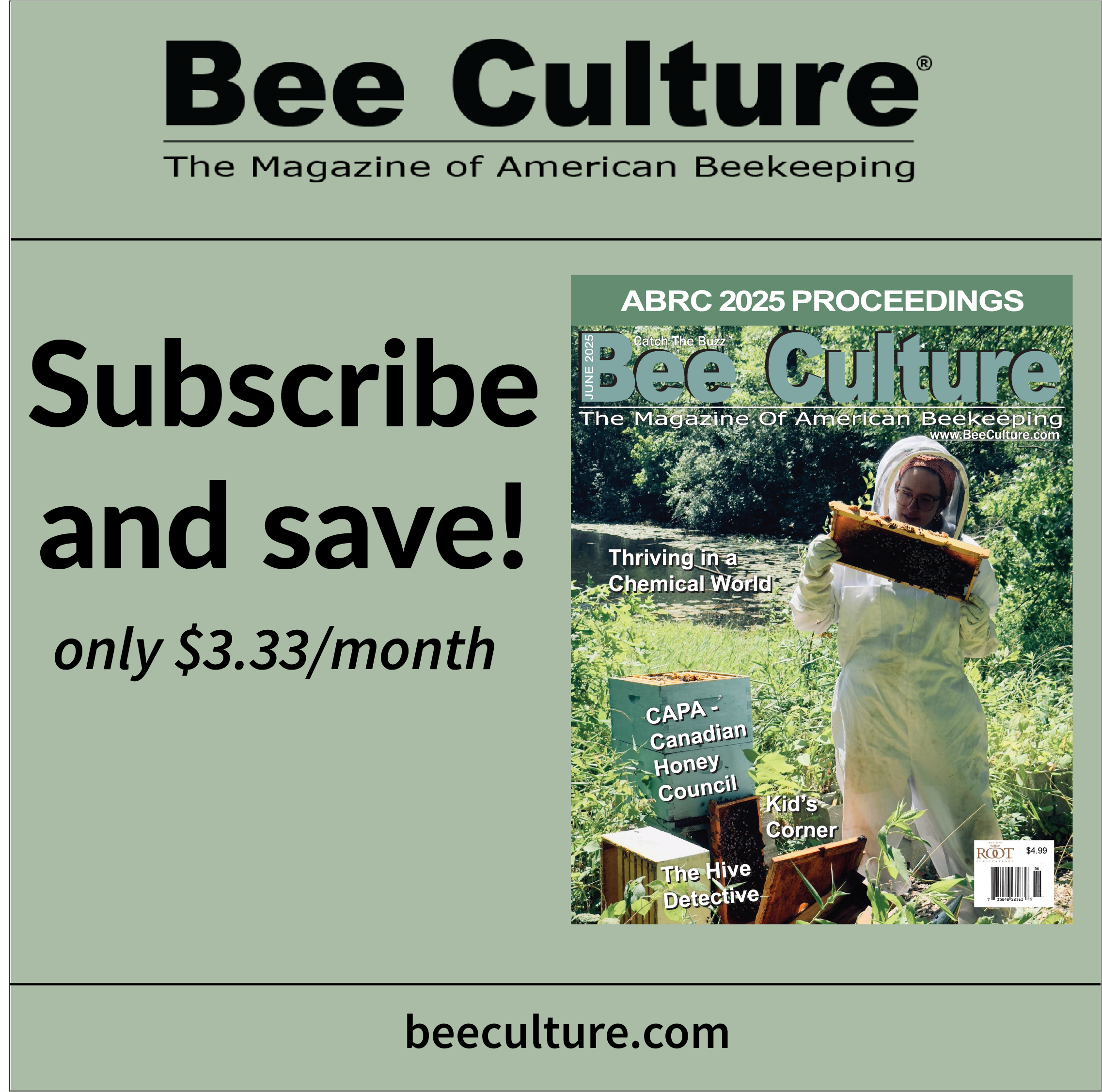By: Malcolm Sanford
This article originally appeared in the Summer 2020 issue of BEEKeeping Your First Three Years

Dr. Thomas D. Seeley is the Horace White Professor in Biology at Cornell University. He is based in the Department of Neurobiology and Behavior, where he teaches courses on animal behavior and does research on the behavior and social life of honey bees. His work is summarized in three books: Honeybee Ecology (1985), The Wisdom of the Hive (1995), and Honeybee Democracy (2010).
The board of directors applauds Dr. Tom Seeley’s work describing something he calls “Darwinian beekeeping.” His keynote presentation at Apimondia 46 in Montreal Canada described the basic ideas for this concept, developed over several decades working in the Arnot Forest at Cornell University and other locations, that are the basis for his several recent books, including Honey Bee Democracy and most recently, The Lives of Bees.
Darwinian Beekeeping is an “evolutionary” approach seeking to help humans provide managed honey bee colonies with living conditions that are as close as possible to those of our wild honey bee ancestors. The goal is to harmonize as much as possible apicultural methods with the natural history of our species, Apis mellifera, encouraging us to make full use of adaptations that we have evolved over the last 30 million years. Dr. Seeley’s work provides the basis for a series of reasonable, and now almost obligatory, practices for beekeepers to consider centered less on treating a bee colony as a honey factory or pollination force, and more by nurturing the lives of its inhabitants. Our conclusion: What took humanity so long to realize that a great many of our activities are driven by the same natural forces as other organisms, including domestic animals and even themselves?
The idea that several populations of honey bees coexist seems obvious to us. Yet this has not necessarily caught the attention of much of the human beekeeping community. Dr. Seeley emphasizes these differences by comparing environmental adaptations found in wild (“natural”) colonies with current circumstances exhibited in (“domesticated”) beekeeping operations.
“Location, location, location” is the mantra of most humans, when choosing a place to live. Driven in a similar way, we honey bees have been “selected” to find and live in suitable residences, although not having the human luxury of shaping the dwelling and/or environment to fit our needs . As a consequence of this, all bees are not alike. The evidence is plain and we urge it be kept upper most in the mind of the human beekeeper at all times.
We are proud of our diversity, etched by natural selection in ways that allow us to survive in almost every environment found on Planet Earth. This is reflected in both structure (body color, size, hirsuteness) and behavior (clustering to produce and conserve heat; dancing to communicate to each other the size and quality of both nest sites and foraging opportunities). Human classifiers of biology (taxonomists) have found at least 30 distinct groups scattered across the globe, collectively calling us by the name or species, Apis mellifera (honey bringer).
We are then divided into subgroups of, based on location and behavior, also known as subspecies or “ecotypes.”
Two global groups of honey bees (Apis mellifera) exist, principally due to whether we are located in temperate or tropical areas. The biggest challenge is keeping the brood nest, what has been called our “social uterus,” in a consistent temperature range between 32 to 35°C. (89.6 to 95°F). In temperate zones, we produce heat by vibrating our wings, and then clustering to conserve loss, while in the tropics, we cool the nest via fanning and evaporation of water. Both take various amounts of energy to accomplish their goals, some more so than others, providing great variability.
Beyond temperature control, groups in temperate zones (usually characterized as “European”) are challenged by various other circumstances quite different in tropical areas (“Africa and South America”). The former must ensure they have enough honey stores to make it through Winter. They are also challenged by relatively few diseases (American and European foulbrood (bacterial), Nosema (protozoan) and pests (mice in Winter), bears, skunks, when compared to their tropical cousins, which also have to deal with a wider-range of potential organisms, including honey badgers and others.
Our tropical sisters have one option generally always available to them, the ability to pull up stakes and move if things get too bad. Often incorrectly called “swarming,” this behavior has nothing to do with reproduction, but is simply a survival technique known as “absconding.” Those in temperate areas must hunker down in Winter time and suffer through major cold spells. Moving under such conditions is out of the question.
Collectively, therefore, all the above potential variables necessary for our survival have parsed us into a reasonably stable, worldwide, genetically adapted population of honey bees. Into this
comes something, we are not prepared for, forceable relocation by human beekeepers.
Dr. Seeley concludes that colony transplant experiments even from regions fairly close in proximity such as Paris to Landes in France (less than 500 miles), reveal marked differences in annual brood cycle between two resident ecotypes, revealing a genetic basis. He concludes, “This example shows us that shipping mated queens, and trucking whole colonies, to hundreds of or thousands of miles away – for instance, from Hawaii to Maine or Italy to Sweden – is likely to force colonies to live in environments to which they are ill suited.”
His resultant advice for the Darwinian beekeeper is clear: “Work with bees that are adapted to your location.” Thus, if you live in the northeastern United States, then either rear queens from survivor colonies or buy queens and/or nuclei from proven stock that has thrived in this harsh climate despite long Winter. If you don’t want to raise queens, but have wild colonies nearby, consider trapping honey bees or collecting swarms that are locally adapted with bait hives. Most importantly, try to keep those bees isolated from fellow beekeepers, who might be purchasing queens shipped in from far away.
On Nest Location
Nest placement is perhaps the most important thing we bees have options to consider when searching for a new home. Dr. Seeley agrees. His considerable research shows that in the wild, honey bee nests are located relatively far apart. Crowded colonies, he says, create greater competition for forage, increased risks of being robbed, and potential problems in reproduction. The latter category includes swarms combining when leaving hives and queens entering wrong hives after mating.
Most harmful, however, he thinks is that a crowded nest landscape boosts pathogen and parasite transmission among colonies. This also creates opportunities for virulent strains of organisms to become introduced and spread more quickly.
Unfortunately, spacing out colonies flies in the face of human beekeeping practice, which demands crowding into groups of colonies or apiaries. Dr. Seeley finds that wild nests in central New York State are spaced roughly 800 meters (.5 miles) apart. This distance is almost impossible to maintain in human-managed apiaries. It is fortunate, however, according to Dr. Seeley, that research shows spacing colonies just 30-50 meters (100 to 160 feet) apart reduces the likelihood of drifting drones, and potentially workers as well. The Darwinian beekeeper, therefore, can take advantage of distributing honey bee colonies across the landscape more extensively than generally found in the management style currently practiced. We bees would appreciate more attention paid to this by our human partners.







